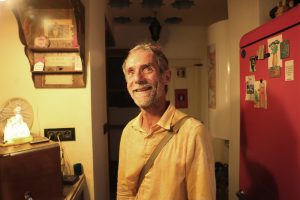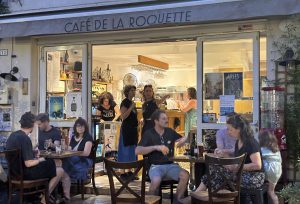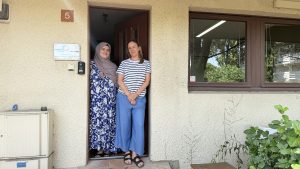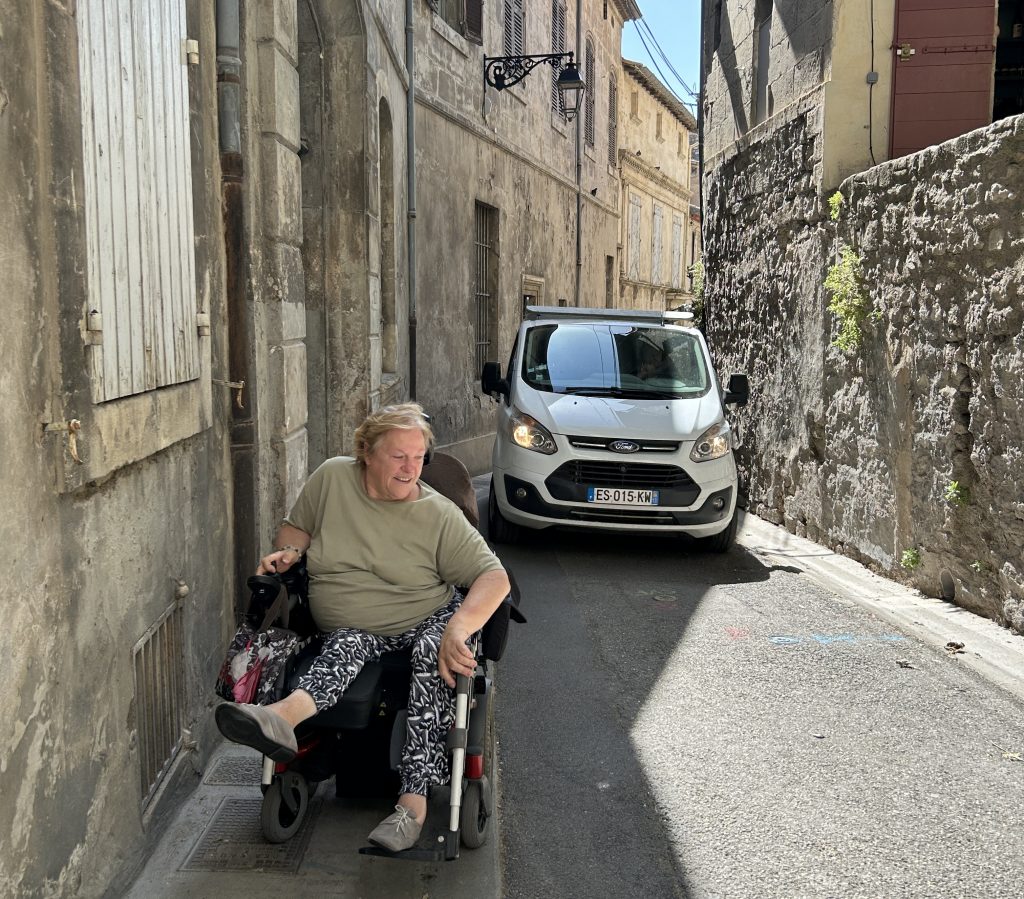
Anita Bonutti, an Arles resident and wheelchair user, presses herself against the side of la Rue du Cloître as she waits for a van to pass by. Narrow streets like this one in the historic center of the city create potentially dangerous situations for Bonutti. Photo by Danny Pottharst.
Text by Danny Pottharst
Photos by Danny Pottharst and Monica Ronco
The cobblestone streets and historic buildings of Arles exude the vintage charm that attracts hordes of tourists to Europe, stitching together an intricate architectural tapestry with echoes of the ancient Roman roots of the city.
Arles’ charm, however, is a double-edged sword. The winding streets that draw travelers are worn with age; divots, cracks, bumps and pockmarks stud their surfaces, which abruptly end at street curbs. The city’s buildings, filled with ancient Roman lore and rich Arlesian culture, can often only be navigated by stairs and, for all their historical significance, require considerable physical effort to move through. When disability is added into the equation, Arles’ charm becomes a barrier instead of an attraction.
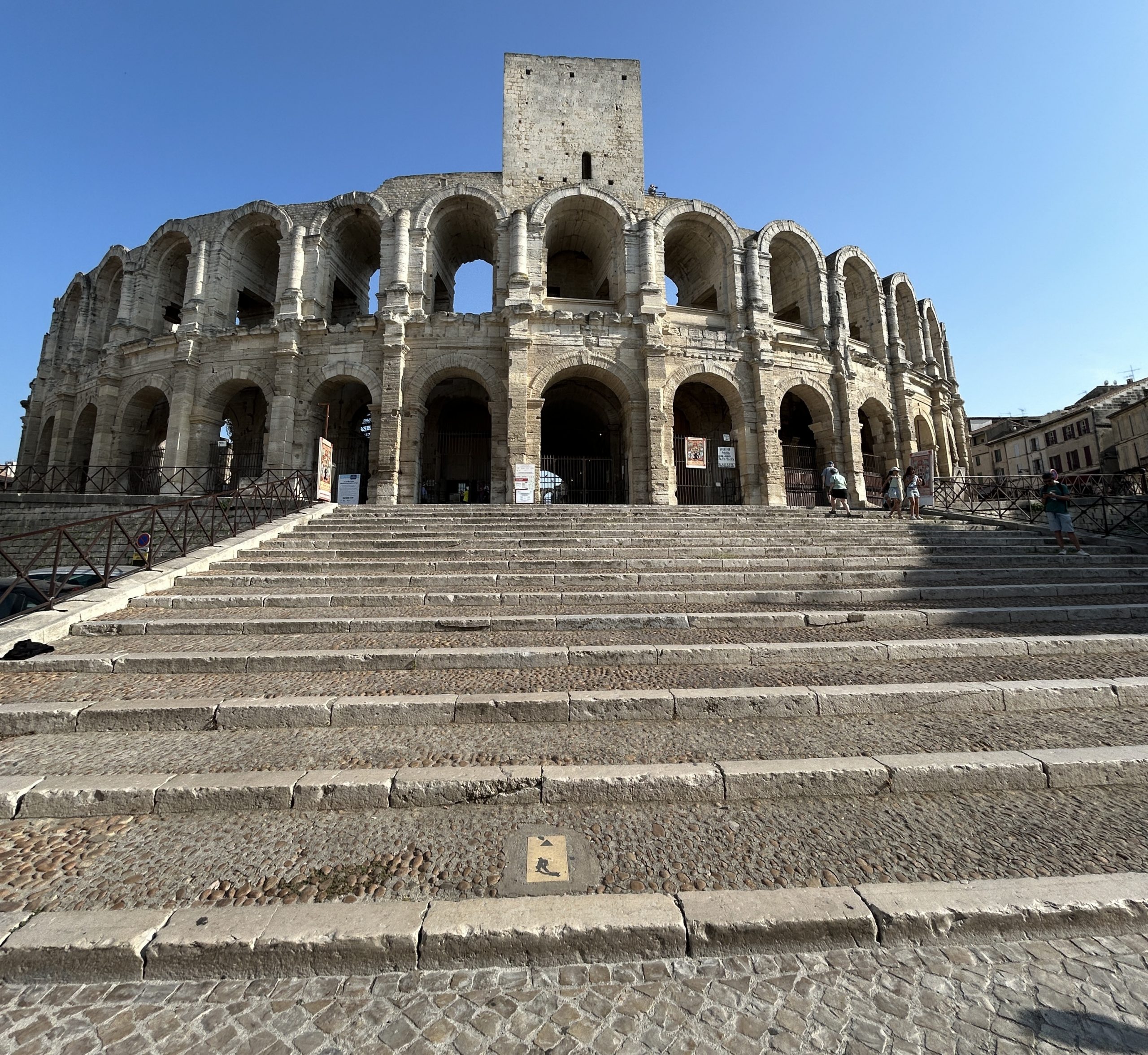
Anita Bonutti is all too familiar with that barrier as an Arles resident and wheelchair user. She described her experience of navigating the city in one word.
“Hell,” she said, smiling.
For Bonutti and many others with physical disabilities, including mobility, sensory and chronic disabilities, urban inaccessibility is the reality of everyday life in Arles. It’s a situation that has improved considerably since the French Disability Act — a landmark law that established social equality and public accommodation for disabled individuals — was passed in 2005. Improvements have also come from the accessibility additions that Arlesian art and culture organizations have made by capitalizing on architectural and technological innovations.
Inaccessibility, however, is still etched into Arles 20 years after the FDA’s passage because of a lack of legal enforcement and inadequate economic prioritization of the act. For all that the act stands for, it has proven incapable of alleviating the tension in Arles between preserving the city’s historical and cultural authenticity and increasing access to it.
Long before the first disability laws were passed in France in 1975, Arles’ architectural development in ancient Rome ensured its fundamental incompatibility with accessible urban planning. Antonella Quarta, manager of press relations, communication and publications at the Office of Tourism in Arles, detailed the extent of this incompatibility.
“Our city is rich in historical heritage. … The historic center still follows an urban layout dating back to Roman times, which was not designed for vehicles or people using wheelchairs,” Quarta wrote in an email interview. “The streets are indeed very narrow, and the sidewalks are high. The city was founded on several hills, so some streets are sloped and cannot be navigated independently by people with reduced mobility or by visually impaired visitors.”
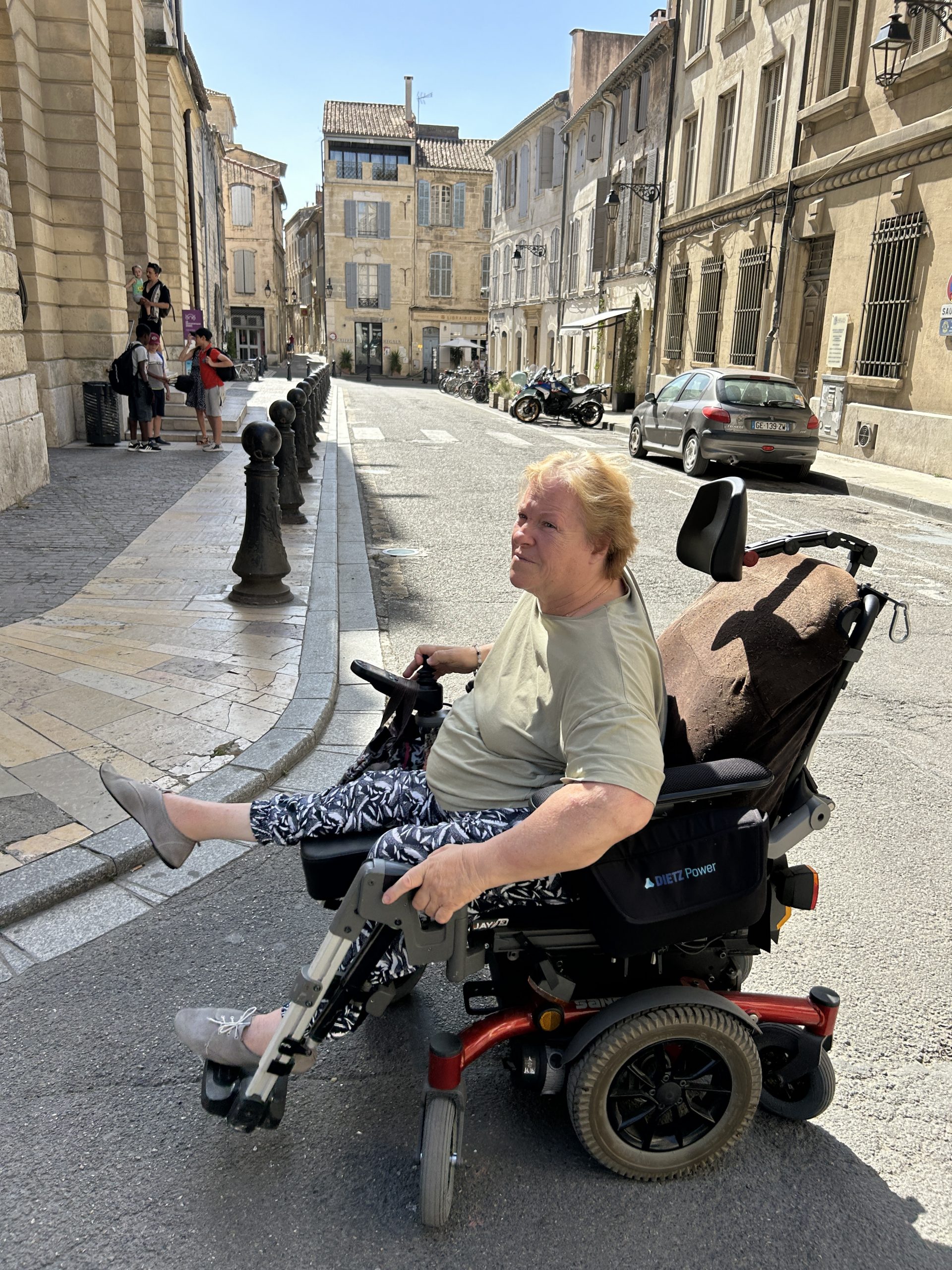
Integrating accessibility into a historical city of this size — and a UNESCO World Heritage Site at that — is an ambitious task, both in theory and in practice. Frédéric Imbert, the 7th deputy mayor of Arles, emphasized this challenge.
“We have many historic [buildings], and we can’t do what we want [architecturally],” Imbert said. “That’s very complicated when we can’t change something.”
Emmanuelle Laurent, director of communications for Ville d’Arles, reiterated this point, adding that the financial burden required to address inaccessibility in historical buildings is too much for Arles to shoulder.
“It’s impossible,” Laurent said. “The city is too poor.”
Even if these logistical and economic obstacles are overcome, making a historical building accessible without destroying its original infrastructure is unfeasible.
“Of course, you have to think about the preservation of the buildings, but there are also some buildings that you just simply cannot make accessible,” Bonutti said. “You can’t ask people to break things down. … However, everything that is new and recent has to be accessible.”
This is a result of the FDA, which seeks to ensure that new buildings — if not old ones — in France are held to accessibility standards. Specifically, the act granted public establishments a 10-year time frame to become accessible by 2015. As Bonutti explained, this entailed government subsidization.
“At the beginning, [buildings and other establishments] had to make things accessible,” Bonutti said. “It was ordered by the (national) Chamber of Commerce, and so money was given to shopkeepers so that they made their shops accessible.”
By 2014, the majority of businesses in France were not on target to meet the 2015 deadline, so the French government extended it.
“It’s a kind of regulation called ‘Ad’AP’ [Scheduled Accessibility Agenda], which meant that things had to be made to conform,” Bonutti said. “Places that received the public in town that didn’t make their place accessible could be fined.”
The Ad’AP program required public businesses to submit a commitment to making their services accessible. In return, businesses were granted an extended deadline to integrate accessibility that ranged from three to nine years, depending on the category of business. To complete an Ad’AP, businesses were required to consider the logistics of integrating accessibility, including necessary tasks, a timeline for those tasks and sources of funding.
However, the Ad’AP program, instituted as a three-year plan, was terminated in 2019.
“When the Ad’AP were finished with, then people were no longer fined, so people stopped making an effort to make their places accessible,” Bonutti said. “And now, you get places that are created that are not accessible because there’s no threat. Today, the law of 2005 is no longer really applied because people are doing what they want.”
Moreover, the FDA does not apply uniformly to every establishment and organization in Arles.
“As it’s a historical town, there have been a lot of exemptions [from standards of accessibility] for … hotels [and] the authorities,” Bonutti said.
Even so, disabled Arlesians have found ways to adapt to inaccessible features of the city, like Bonutti does when she travels on roads instead of sidewalks.
Bonutti has many a time started down a sidewalk, reached its end, and found it missing a curb ramp on which to enter the street. In these situations, she must retrace her route back along the sidewalk and then, this time along the road, retrace once again.
“When there are good sidewalks, cars park on them, so you can’t go on the sidewalks — you have to be on the road. … It’s much easier,” Bonutti said.
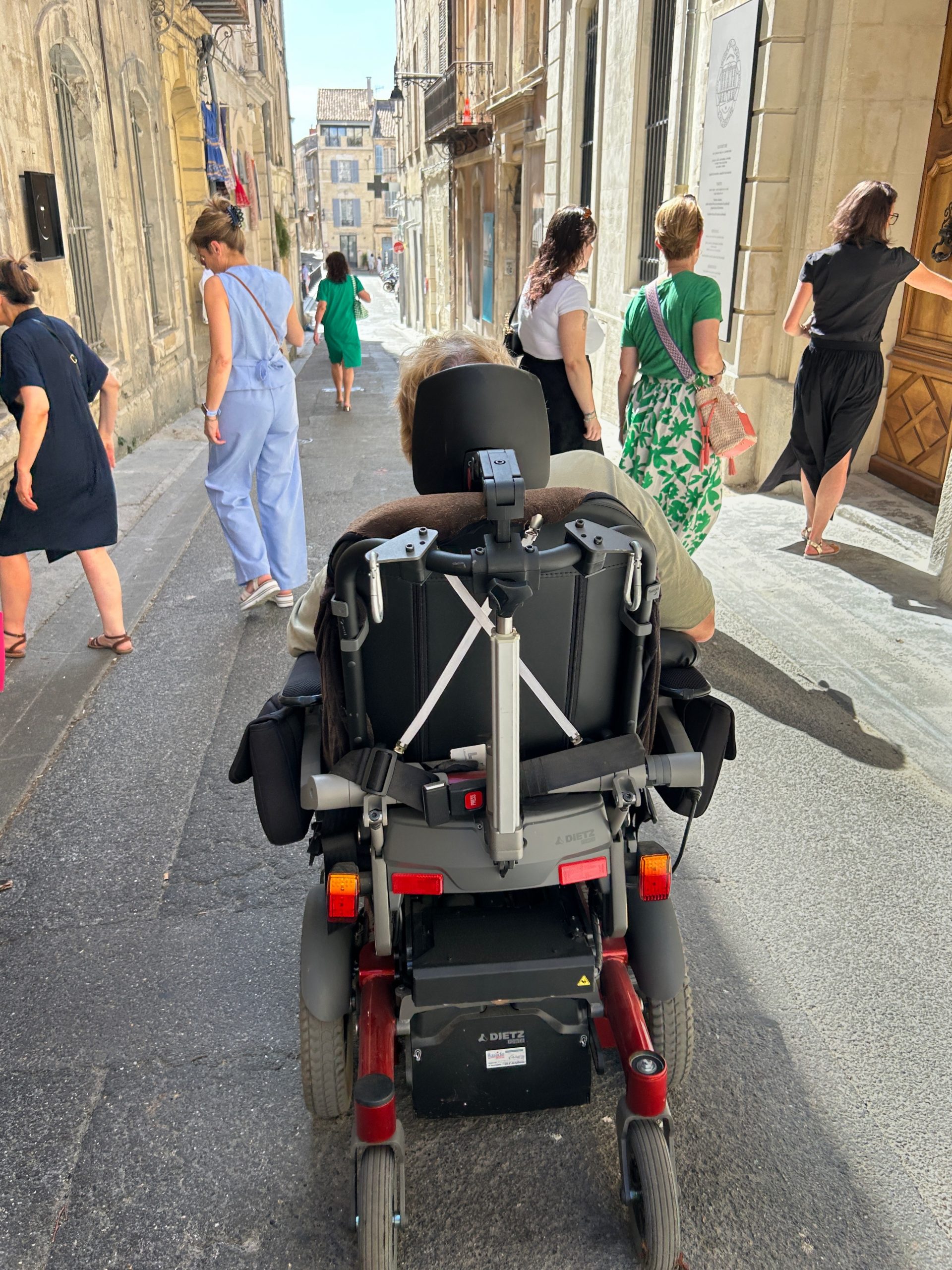
Though Arles’ roads are generally flatter than its sidewalks, they are by no means ideal for wheelchair travel.
“All the roads need redoing,” Bonutti said. “One of the problems now is that we have a lot of big, heavy cars that go on the roads, and the tarmac isn’t adapted, so the tarmac gets lots of pressure put on it. It creates holes in the road, and so even the roads aren’t really flat anymore.”
These circumstances also put Bonutti in potentially dangerous situations. For example, when a car approaches Bonutti on a narrow street, she is forced to squeeze herself against one side of the road to allow the car to pass. Still, she doesn’t let any of these obstacles stop her.
“As I’m not afraid, I’m always on the road. I’m always out and about,” Bonutti said.
Still, though, there is frustration for her as a longtime resident of Arles who faces a steady stream of inaccessibility — inaccessibility that extends far beyond sidewalks and roads. Bonutti was unable to be married at the Hôtel de Ville, the town hall in Arles, due to its inaccessibility. The building, whose classical architecture and sumptuous interior decoration make it a popular wedding location, at the time only had a staircase to access the courtroom where ceremonies take place.
“I had to go to Moulès, which is a village near here,” Bonutti said. “We can’t even get married in our own town.”
Though the city hall is a glaring exception, Bonutti noted that many of Arles’ well-known public buildings are accessible. Many of these are arts and culture businesses, like LUMA Arles.
Anna Pericchi, a mediation guide at LUMA, explained how the FDA applies to museums.
“When you are a public museum, you have to abide by those rules [of the FDA] because you cannot be open to the public and not be accessible,” Pericchi said.
LUMA, which has made headlines for its infusion of avant-garde, modern art and architecture into Arles, is equipped with a variety of accessible aids, including a tactile map of the building, braille and Facile à Lire et à Comprendre (FALC), or accessible language.
“We try, because it’s very important to be inclusive,” Pericchi said. “It’s not perfect — far from perfect,” Pericchi said.
Another cultural institution, the Museon Arlaten, received national recognition for its accessibility. In 2024, the museum was awarded the 2024 Accessible Tourism Trophy in the “Places to Visit” category over dozens of other tourism businesses in France.
Regina Pastotter, the museum’s cultural mediator for the disabled, and Cyril Brunet, its communications and public relations officer, expressed their pride and gratitude for the recognition.
“It’s a reward for all the years of hard work … of the team, but also of outside partnerships. That’s why we put it there [in the museum’s entryway], because it’s for everyone.”
The trophy was the culmination of the museum’s journey toward accessibility, which began with an 11-year renovation project in 2009.
Before that, “the museum was not accessible at all,” Pastotter said.
In 2021, it reopened to the public, outfitted with wheelchair storage, assistive listening devices, online audio descriptive tours and countless other accessible features.
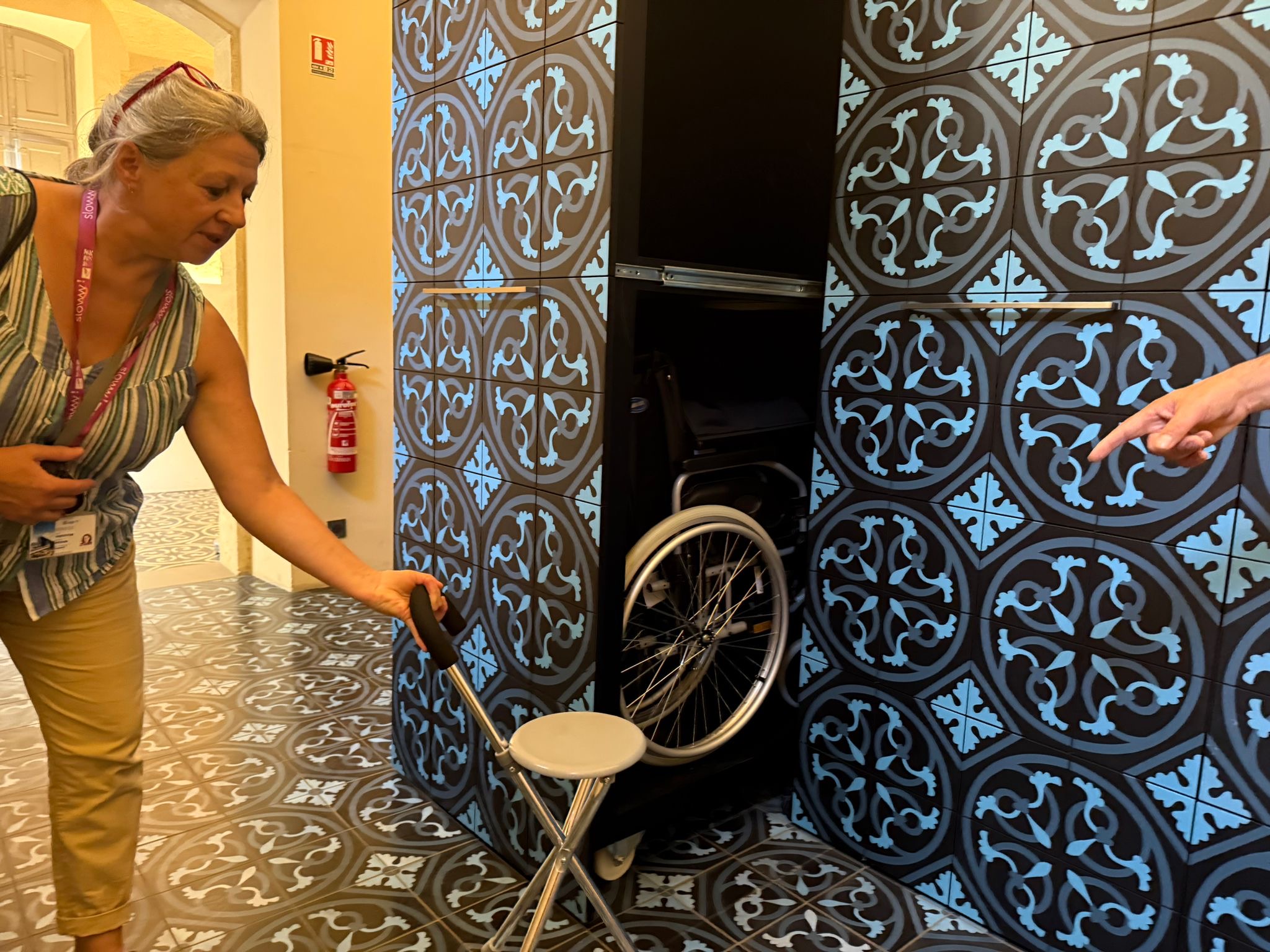
As Arles continues on its accessibility journey, it can look to LUMA Arles, the Museon Arlaten and other visitor sites in Arles for prime examples of accessible businesses. There are many incentives for the city to further invest in these projects, particularly in connection with accessible tourism. For example, according to a 2019-2022 survey conducted by the Provence Alpes Côte d’Azur Regional Tourism Committee, 28 percent of tourists in Arles are seniors, and disability is most prevalent among older populations.
Homing in on accessible tourism to cater to disabled tourists is one thing. Harnessing the latent power of the local disability community in Arles is another.
“In terms of actual people with disabilities, it’s really hard to get them to come out of their homes, and I’ve given up trying,” Bonutti said. “I try to invite them, but half of them never come. A lot of them are in denial about their disability. [There are those] who don’t want to be seen in a wheelchair. And some are in their comfort zone, and they don’t want to come out of that, either.”
In the face of systemic obstacles to accessibility and resulting internalized ableism, Bonutti shared a message of perspective and confidence for other disabled Arlesians.
“It’s not because the wheels replace my legs that I’m disabled,” Bonutti said. “There are far greater things that disable someone.”
Anna Cauvin and Monica Ronco served as interpreters for this story.
